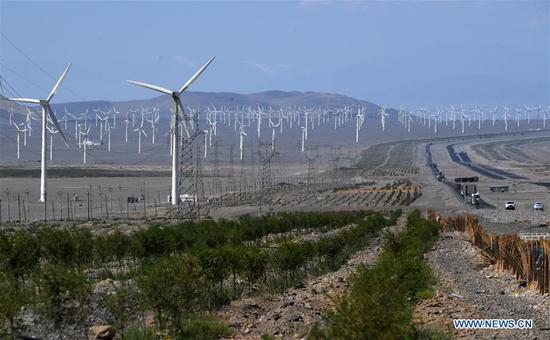
Li Daokui listens during a panel discussion at the 2019 Impact Summit in Beijing on Jan 5, 2019. [Photo/chinadaily.com.cn]
Editor's Note: The Main Street column features opinions of leading economists and industry luminaries who have expressed their views on hot topics in media recently.
As tariff tensions between China and the U.S. intensified this year, trade of China, the U.S. and other countries has been affected.
The import and export volumes of China have shrunk by a certain degree, but remained generally controllable as the trade surplus has grown steadily.
Although the U.S. tariffs slapped on Chinese exports were aimed to reduce perceived trade deficit, that has not happened. In fact, after new tariffs were imposed, U.S. trade deficit has widened.
The trade friction has started to affect East Asia, Southeast Asia, Latin America and other countries and regions.
The trade dispute between China and the U.S. is increasing risks to the global value chain and pushing it toward a crash. China needs to stick to the bottom-line.
While taking appropriate and necessary counter-measures, it needs to further open up, deepen reforms, and consolidate investment and economic cooperation with the economies involved in the Belt and Road Initiative.
During the ongoing trade dispute, the U.S. has slapped 20-percent tariffs on almost half of entire Chinese exports, but such measures have not helped the U.S. to improve trade environment or narrow the deficit.
Since the second half of 2018, U.S.' monthly trade growth rate has declined significantly. In April, its exports even showed a 2.12 percent yearly decline. (China's goods trade surplus with the U.S. was $323.33 billion in 2018.)
The bilateral tariffs have to some extent changed the trade situation, but the U.S.' dependence on Chinese goods has made it impossible to source a more suitable trade partner in the short term.
Since the tariffs were implemented in 2018, the proportion of Chinese goods merely nudged from 21.6 percent in 2017 to 21.2 percent of U.S.' entire imports, while its exports to China reduced from 8.4 percent in 2017 to 7.2 percent in 2018. Soybean and fossil fuels such as crude oil were among the most affected products during the friction.
Against the backdrop of Sino-U.S. trade friction, foreign direct investment in China has maintained stable growth. That was due to the promising domestic consumption market and the improving infrastructure. It can also be attributed to the optimizing business environment, especially after the country released the first Foreign Investment Law in March, which was the first fundamental law in foreign investment.
China needs to pay enough attention to the fact that some foreign investors may consider retreating from certain industries in China. However, I don't think the friction will cause the entire supply chain to flee China.
The country still offers unmatched advantages like skilled workers, mature infrastructure, a huge domestic market and large manufacturing capacity. These are almost impossible to find in Southeast Asia in the foreseeable future.
Li Daokui, director general and chief economist at New Development Bank, director of the Academic Center for Chinese Economic Practice and Thinking at Tsinghua University, spoke at the release of a report on China's macroeconomy on June 23.


















































